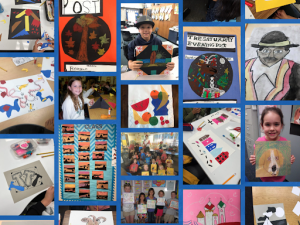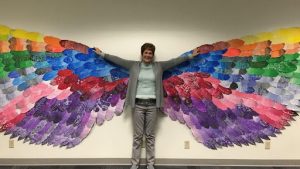Art is a powerful tool to enhance brain function. Neuroscience advancements have proved that creative activities improve cognitive performance. Furthermore, drawing, painting, sculpting, and doodling light up the human brain, regulate emotions and improve memory. In summary, art is food for the brain. Here are a few benefits of art education for brain functioning.
Light up the brain
Art activates multiple areas of the human brain, including the frontal lobe, for problem-solving and planning. It works in rhythm with the motor cortex (for movement), the visual cortex (for processing information), and the limbic system (for handling emotions and memory). The full-brain workout sessions strengthen neural connections for the development of new pathways. Scientists call it neuroplasticity.
To see art and its benefits, visit https://www.instagram.com/meetthemastersart/.
Neuroplasticity is the capability of the brain to form new neural connections. Hence, working on creative art challenges the brain to make decisions, visualize results, and make decisions. These are keys to cognitive flexibility and mental resilience.
Boosting emotional intelligence
Art is tied to human emotions. Creating or observing an art activity activates the brain’s reward centers. It helps release feel-good chemicals, such as dopamine and serotonin. Hence, mood enhancement is one of the benefits of arts in schools. It helps regulate emotions and reduce stress.
Students develop emotional intelligence by conveying their feelings non-verbally. Furthermore, art serves as a form of meditation and mindfulness, calming the nervous system and reducing anxiety.
To learn more, visit https://meetthemasters.com/10-benefits-art-education-for-kids-elementary-school-students-love-art/.
Improved memory and focus
Engaging in visual arts improves working memory and attention span. Indulging in activities like painting and sketching requires focus and decision-making. As a result, it strengthens the executive functions— and students learn organization, prioritization, and maintaining attention.
To see vibrant art pieces, visit https://www.facebook.com/meetthemasters.

Visiting a museum or observing a painting improves memory and observation skills. Many Alzheimer’s and dementia care programs conduct art therapy to stimulate memory and cognition in adults.
A brain-boosting habit for students of all ages
During the early childhood and schooling stage, incorporating art education supports mental agility, emotional well-being, and lifelong learning. It’s more about engaging the students’ brains in a way that words alone can’t.
Click here to explore more!
The next time you pick a paintbrush or pencil to create something beautiful, you will simultaneously strengthen your brain neurons. Adding art education to the curriculum fosters resilience and self-awareness in students about emotions.
At Meet the Masters, professionals go far beyond the classroom and show you why art education is important in life.
To get more details, visit our 35 Master Artist

